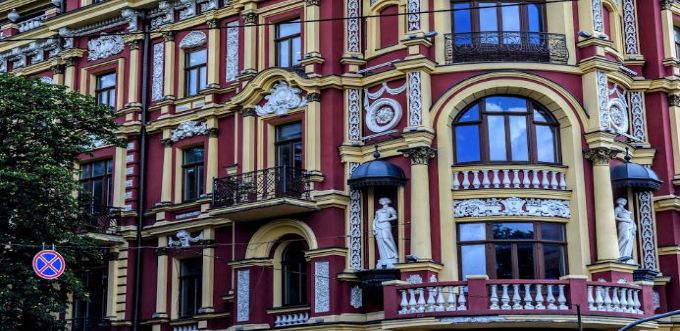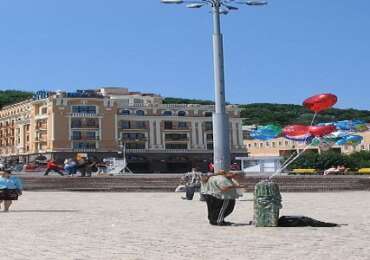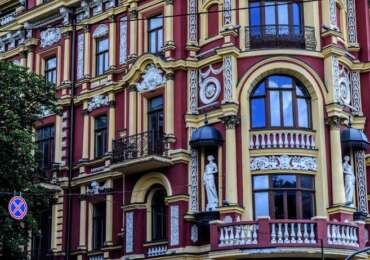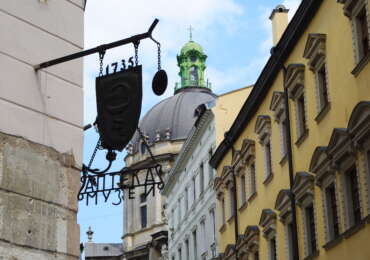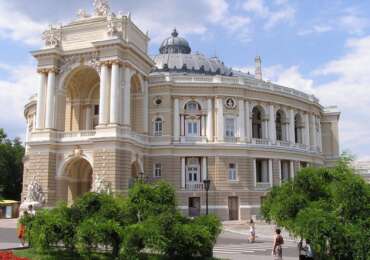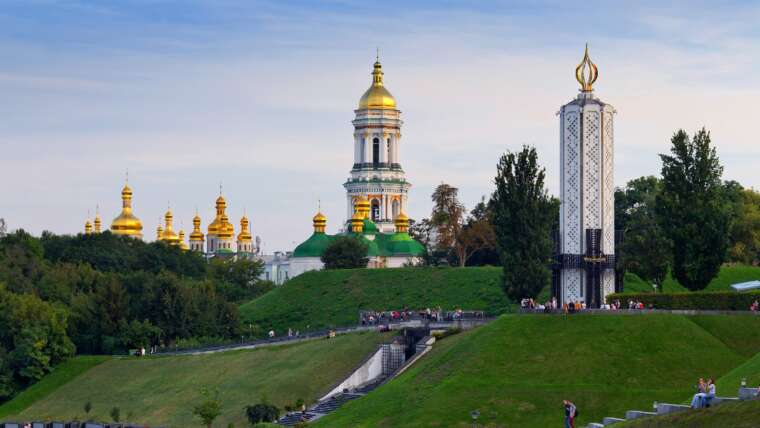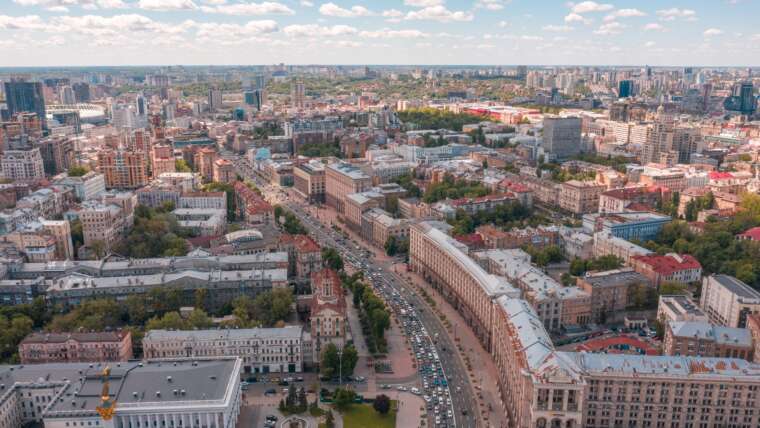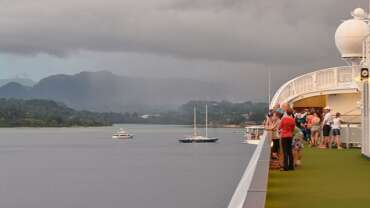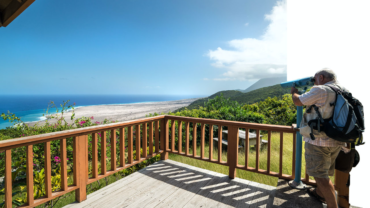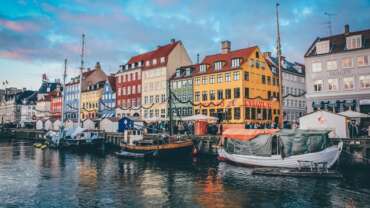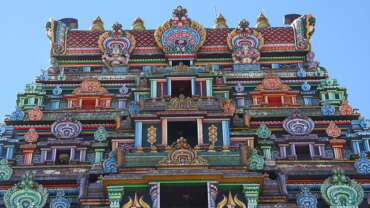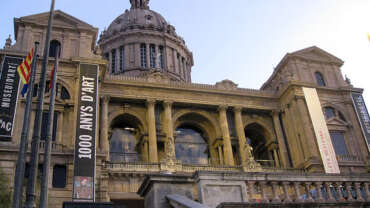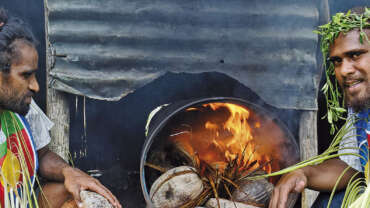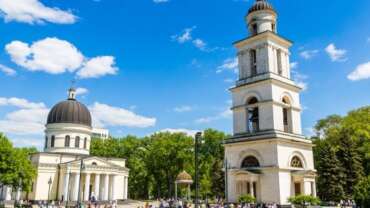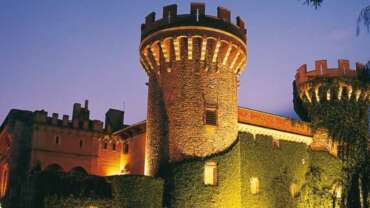Ukraine - It's all about U
Ukraine is a large country in Eastern Europe known for its Orthodox churches, Black Sea coastline and forested mountains. Its capital, Kiev, features the gold-domed St. Sophia’s Cathedral, with 11th-century mosaics and frescoes. Overlooking the Dnieper River is the Kiev Pechersk Lavra monastery complex, a Christian pilgrimage site housing Scythian tomb relics and catacombs containing mummified Orthodox monks.
A fully independent Ukraine emerged only late in the 20th century, after long periods of successive domination by Poland-Lithuania, Russia, and the Union of Soviet Socialist Republics (U.S.S.R.). Ukraine had experienced a brief period of independence in 1918–20, but portions of western Ukraine were ruled by Poland, Romania, and Czechoslovakia in the period between the two World Wars, and Ukraine thereafter became part of the Soviet Union as the Ukrainian Soviet Socialist Republic (S.S.R.).
When the Soviet Union began to unravel in 1990–91, the legislature of the Ukrainian S.S.R. declared sovereignty (July 16, 1990) and then outright independence (August 24, 1991), a move that was confirmed by popular approval in a plebiscite (December 1, 1991). With the dissolution of the U.S.S.R. in December 1991, Ukraine gained full independence. The country changed its official name to Ukraine, and it helped to found the Commonwealth of Independent States (CIS), an association of countries that were formerly republics of the Soviet Union.
History of Ukraine
From prehistoric times, migration and settlement patterns in the territories of present-day Ukraine varied fundamentally along the lines of three geographic zones. The Black Sea coast was for centuries in the sphere of the contemporary Mediterranean maritime powers. The open steppe, funneling from the east across southern Ukraine and toward the mouth of the Danube River, formed a natural gateway to Europe for successive waves of nomadic horsemen from Central Asia. And the mixed forest-steppe and forest belt of north-central and western Ukraine supported an agricultural population (most notably the Trypillya culture of the mid-5th to 3rd millennia BCE), linked by waterways to northern and central Europe. The marshlands of these zones were frequent areas of both military conflict and cultural transmission.
Beginning in the 7th–6th centuries BCE, numerous Greek colonies were founded on the northern coast of the Black Sea, on the Crimean Peninsula, and along the Sea of Azov; these Hellenic outposts later came under the hegemony of the Roman Empire (see ancient Greek civilization; ancient Rome). During the 1st millennium BCE the steppe hinterland was occupied successively by the Cimmerians, Scythians, and Sarmatians. These peoples, all of Iranian stock, maintained commercial and cultural relations with the Greek colonies.
A period of great migrations began with the descent of the Goths from the Baltic region into Ukraine about 200 CE. They displaced the Sarmatians, but their own power was broken about 375 by the invading Huns from the east, who were followed in the 5th–6th centuries by the Bulgars and Avars. Between the 7th and 9th centuries, the Ukrainian steppe formed part of the Turkic Khazar mercantile empire, which was centred on the lower Volga River. Khazar control of the steppe was breached in the late 9th century by the Magyars (Hungarians). The Pechenegs, who followed, dominated much of southern Ukraine in the 10th and 11th centuries, and they were in turn succeeded by the Polovtsians (Cumans). Throughout this period of nomadic invasions, only a few of the Greek settlements on the Crimean Peninsula, notably Chersonesus (see Tauric Chersonese), maintained a precarious existence, relying on the support of the Byzantine Empire.
In the meantime, under the impact of Germanic migrations, the movement of Slavic tribes from their primordial homeland north of the Carpathians began in the 5th and 6th centuries. While some Slavs migrated westward and others south into the Balkans, the East Slavs occupied the forest and forest-steppe regions of what are now western and north-central Ukraine and southern Belarus; they expanded farther north and to the northeast into territories of the future Russian state centred on Moscow. The East Slavs practiced agriculture and animal husbandry, engaged in such domestic industries as cloth making and ceramics, and built fortified settlements, many of which later developed into important commercial and political centres. Among such early settlements was Kyiv (Kiev), on the high right (western) bank of the Dnieper River.
People of Ukraine
Ethnic groups
When Ukraine was a part of the Soviet Union, a policy of Russian in-migration and Ukrainian out-migration was in effect, and ethnic Ukrainians’ share of the population in Ukraine declined from 77 percent in 1959 to 73 percent in 1991. But that trend reversed after the country gained independence, and, by the turn of the 21st century, ethnic Ukrainians made up more than three-fourths of the population. Russians continue to be the largest minority, though they now constitute less than one-fifth of the population. The remainder of the population includes Belarusians, Moldovans, Bulgarians, Poles, Hungarians, Romanians, Roma (Gypsies), and other groups. The Crimean Tatars, who were forcibly deported to Uzbekistan and other Central Asian republics in 1944, began returning to the Crimea in large numbers in 1989; by the early 21st century they constituted one of the largest non-Russian minority groups. In March 2014 Russia forcibly annexed Crimea, a move that was condemned by the international community, and human rights groups subsequently documented a series of repressive measures that had been taken against the Crimean Tatars by Russian authorities.
Historically, Ukraine had large Jewish and Polish populations, particularly in the Right Bank region (west of the Dnieper River). In fact, in the late 19th century slightly more than one-fourth of the world’s Jewish population (estimated at 10 million) lived in ethnic Ukrainian territory. This predominantly Yiddish-speaking population was greatly reduced by emigration in the late 19th and early 20th centuries and by the devastation of the Holocaust. In the late 1980s and early ’90s, large numbers of Ukraine’s remaining Jews emigrated, mainly to Israel. At the turn of the 21st century, the several hundred thousand Jews left in Ukraine made up less than 1 percent of the Ukrainian population. Most of Ukraine’s large Polish minority was resettled in Poland after World War II as part of a Soviet plan to have ethnic settlement match territorial boundaries. Fewer than 150,000 ethnic Poles remained in Ukraine at the turn of the 21st century.
Languages
The vast majority of people in Ukraine speak Ukrainian, which is written with a form of the Cyrillic alphabet. The language—belonging with Russian and Belarusian to the East Slavic branch of the Slavic language family—is closely related to Russian but also has distinct similarities to the Polish language. Significant numbers of people in the country speak Polish, Yiddish, Rusyn, Belarusian, Romanian or Moldovan, Bulgarian, Crimean Turkish, or Hungarian. Russian is the most important minority language.
Art & Culture of Ukraine
The arts – Literature
Written Ukrainian literature began with Christianization and the introduction of Old Church Slavonic as a liturgical and literary language. The literary heritage of the Ukrainian people in the early period, from the 11th to the 13th centuries, is that of Kyivan (Kievan) Rus; sermons, tales, and lives of the saints were the major genres. After the Mongol destruction of Kyivan Rus in the 13th century, literary activity in Ukraine declined. A revival began in the 14th century and was spurred further in the 16th century with the introduction of printing, the Reformation ferment, and the advance of the Counter-Reformation into Polish-dominated Ukrainian lands.
The Ukrainian vernacular gradually became more prominent in writings in the 16th century, but this process was set back in the 17th and 18th centuries, when many Ukrainian authors wrote in Russian or Polish. At the end of the 18th century, modern literary Ukrainian finally emerged out of the colloquial Ukrainian tongue.
Nineteenth-century Ukrainian writers greatly contributed to the reawakening of Ukrainian national consciousness under the Russian Empire. The classicist poet and playwright Ivan Kotlyarevsky may be considered the first modern Ukrainian author. In his work Eneyida (1798), he transformed the heroes of Virgil’s Aeneid into Ukrainian Cossacks. Classicist prose appeared only with Hryhorii Kvitka-Osnovianenko’s novel Marusya (1834).
In the 1830s Ukrainian Romanticism developed, and such authors as Izmail Sreznevsky, Levko Borovykovsky, Amvrosii Metlynsky, and Mykola Kostomarov published works that recognized a particular Ukrainian culture and history. In western Ukraine, Markiian Shashkevych, Yakiv Holovatsky, and Ivan Vahylevych constituted the so-called “Ruthenian Triad” of Ukrainian Romanticism. A markedly different approach was taken by Nikolay Gogol (Ukrainian: Mykola Hohol), who wrote Romantic works with Ukrainian themes in Russian and with a “pan-Russian” spirit.
The most important 19th-century Ukrainian poet, Taras Shevchenko, treated Ukrainian history and Russian oppression, as well as broader themes. Panteleymon Kulish was another significant poet of the period.
Visual arts
Over the centuries the Ukrainian people have evolved a varied folk art. Embroidery, wood carving, ceramics, and weaving are highly developed, with stylized ornamentation that represents many regional styles. Intricately patterned Easter eggs (pysanky) have become popular in many countries that have Ukrainian immigrant populations.
With the introduction of Christianity in the 10th century, the various forms of Byzantine art (e.g., architecture, mosaics, frescoes, manuscript illumination, and icon painting) spread rapidly and remained the dominant art forms through the 16th century. The mosaics and frescoes of the churches of Kyiv, notably the cathedral of St. Sophia (11th–12th century), and the icons of the more distinctively Ukrainian school in Galicia (15th–16th century) are particularly noteworthy. A number of outstanding churches of this period, notably the cathedral of St. Michael’s Golden-Domed Monastery (early 12th century), were demolished by the Soviet authorities in the 1930s; only international protests saved the cathedral of St. Sophia from the same fate.
Baroque architecture had a pronounced impact in Ukraine, and a distinctive “Cossack Baroque” style developed there. Western European influences in the 17th and 18th centuries also affected iconography and stimulated portrait painting, engraving, and sculpture.
Western trends were carried to Russia by Ukrainian artists working there from the 18th century. During the late 18th and early 19th centuries the Ukrainian-born sculptor and rector of the St. Petersburg Academy of Arts, Ivan Martos, and the Ukrainian-born portraitists Dmytro Levytsky and Volodymyr Borovykovsky were among the leading figures of the St. Petersburg Classical school of painting.
The classicism and the emergent realism of the 19th century are best exemplified by the poet-painter Taras Shevchenko. New art movements are evident in the work of such 19th-century painters as the Impressionists Ivan Trush, Mykola Burachek, and Aleksander Murashko; the Post-Impressionist Mykola Hlushchenko; and the Expressionists Oleksander Novakivsky, Alexis Gritchenko (Ukrainian: Oleksa Hryshchenko), and Anatoly Petrytsky (see Impressionism; Post-Impressionism; Expressionism).
The brief renewal of Ukrainian independence in 1918 further fostered avant-garde trends that reflected a resurgence of Ukrainian national traditions. Two schools developed: in painting, the Monumentalism of Mykhaylo Boychuk, Ivan Padalka, and Vasyl Sedliar, consisting of a blend of Ukrainian Byzantine and Early Renaissance styles; and, in the graphic arts, the Neo-Baroque of Heorhii Narbut. Modernist experimentation ended in Soviet Ukraine in the 1930s, however, when both these schools were suppressed and Socialist Realism became the only officially permitted style.
The Ukrainian avant-garde was rejuvenated following Soviet leader Nikita Khrushchev’s de-Stalinization campaigns of the late 1950s; it consisted mostly of Expressionists who wanted to illustrate Ukraine’s tragic modern history. These artists, who included Alla Horska, Opanas Zalyvakha, and Feodosy Humenyuk, were again suppressed by the Soviet authorities in the 1970s and ’80s.
A number of Ukrainian artists have won considerable renown in the West, among them Gritchenko, who began with Cubism and then turned to a dynamic form of Expressionism, and the painter and engraver Jacques Hnizdovsky, who developed a simplified style of realism. The sculptor Alexander Archipenko (Ukrainian: Oleksander Arkhypenko), one of the pioneers of Cubism who later experimented in Constructivism and Expressionism, was a major figure of 20th-century European art.
Cultural institutions
There are numerous professional theatres in Ukraine, notably the Ivan Franko National Academic Drama Theatre in Kyiv and the Mariia Zankovetska National Academic Ukrainian Drama Theatre in Lviv. Ukraine also has several opera theatres, numerous symphony orchestras, academic and folk choirs, and other performing ensembles. Amateur groups of song and dance are very popular as well.
The Shevchenko Scientific Society, established in 1873, was the main Ukrainian scholarly body in western Ukraine until it was forcibly dissolved in 1940, after the Soviet Union occupied the region. It reestablished itself in western Europe and the United States in 1947, and in 1989 the society resumed operations in Ukraine. Among its many activities, the society sponsors conferences and lectures, awards research grants, and publishes scholarly works, particularly in the field of Ukrainian studies.
Among the notable museums in the country are the Museum of the History of Ukraine and the Museum of the Art of Ukraine (both in Kyiv). The Museum of Folk Architecture and Folkways of Ukraine, an open-air museum in the village of Pyronovo, preserves elements of 17th- and 18th-century village life. The National Museum of the Great Patriotic War of 1941–1945 is part of a memorial complex near the Dnieper in Kyiv that includes the iconic statue Motherland-Mother, which is more than 328 feet (100 metres) tall.
Ukraine - Largest Country in Europe

The predominant religion in Ukraine, practiced by almost half the population, is Eastern Orthodoxy. Historically, most adherents belonged to the Ukrainian Orthodox Church–Kyiv Patriarchate, though the Ukrainian Orthodox Church–Moscow Patriarchate was important as well. A smaller number of Orthodox Christians belonged to the Ukrainian Autocephalous Orthodox Church. In January 2019 the Kyiv Patriarchate and Autocephalous churches were merged into a single body as the Orthodox Church of Ukraine.
In creating the new church, Ecumenical Patriarch Bartholomew I formalized the independence of Ukraine’s Orthodox community, which had been under the jurisdiction of the patriarchate of Moscow since 1686. In western Ukraine the Ukrainian Greek Catholic Church prevails. Minority religions include Protestantism, Roman Catholicism, Islam (practiced primarily by the Crimean Tatars), and Judaism. More than two-fifths of Ukrainians are not religious.



